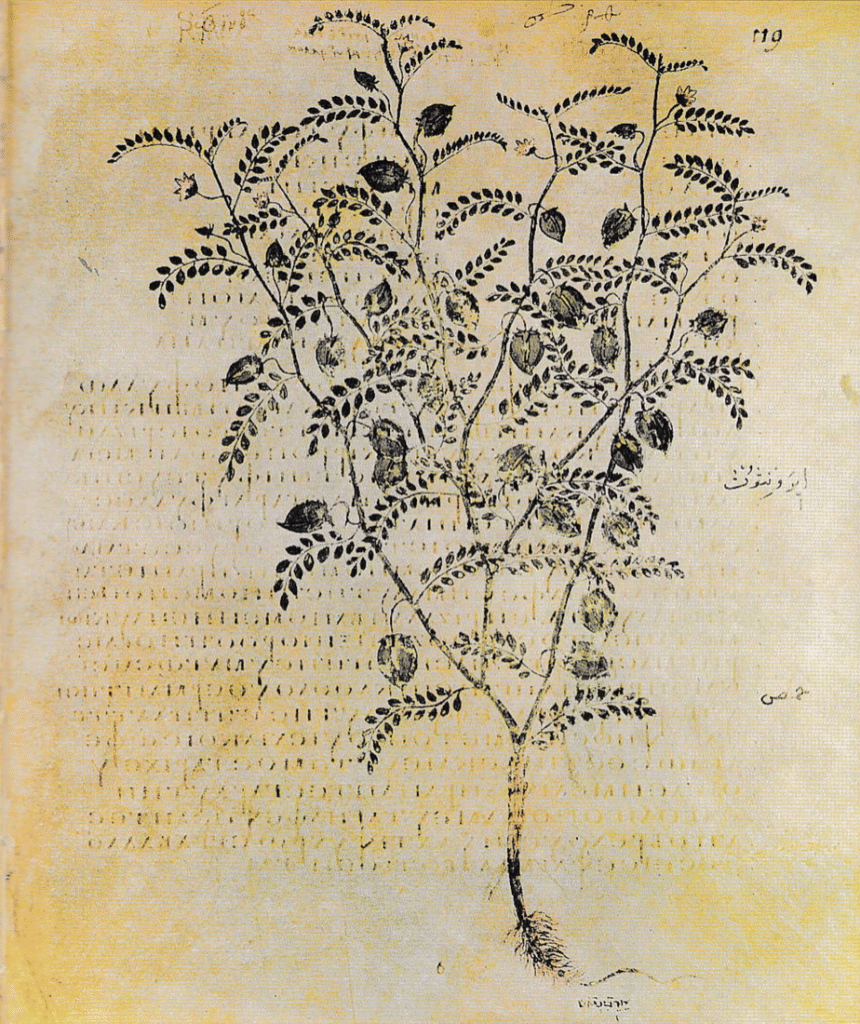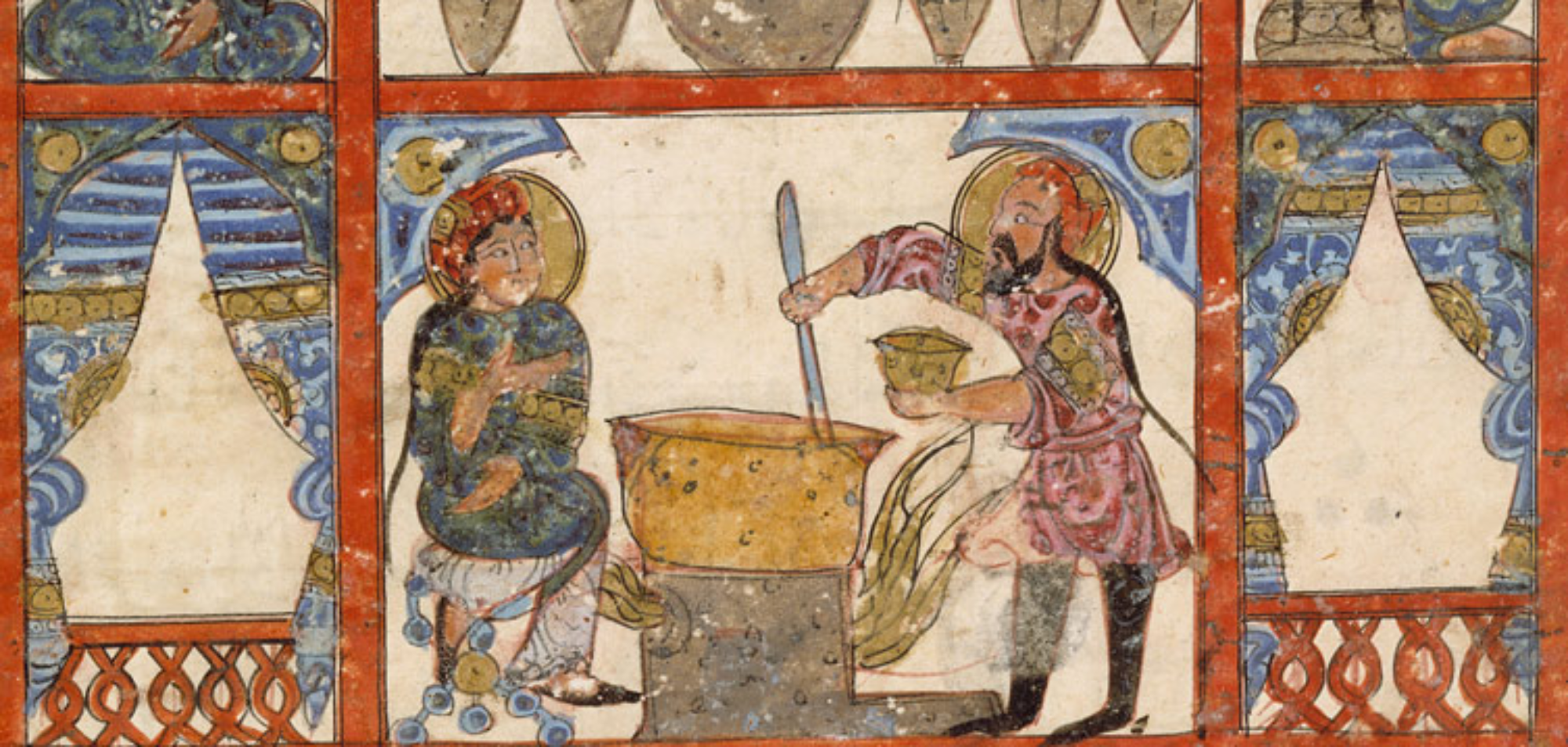Chickpeas (Cicer arietinum) are one of the oldest cultivated pulses of the Near East with the earliest evidence going back to Palestine 8000 BCE. They were cultivated in Egypt at least since Pharaonic times and the flour was used to make bread.
In ancient Greece, chickpeas were served (green, roasted, dried or boiled) as a snack eaten with alcohol. Chickpea soup was a popular street food for the Romans.
In the medieval Arabic culinary tradition, chickpeas (himmaṣ, himmiṣ with hummus being the usual dialectal form) a number of savoury dishes (stews, omelettes), condiments and pickles. In Mamluk recipe collections we already fine modern-day favourites like qaḍāma (roasted and salted chickpeas) and what is possibly the most famous dip – hummus. The historical ancestor of the latter can be found in a number of mashed chickpea recipes – most of them from Egypt, but a few more from 13th-century Aleppo. cookery book, was known as mashed chickpeas) and though the ingredients are a bit different, there are enough similarities (including the use of tahini) to establish a clear ancestral link.
All of the recipes start with boiled chickpeas mashed into a paste (sometimes sieved for smoothness), with textures ranging from soft and spreadable to firmer paste-like consistency. In terms of fat source, olive oil predominates, but some recipes use rendered sheep-tail fat or nut oils (walnut, linseed). Most variations contain nuts — usually walnuts, sometimes added with almonds, pistachios and hazelnuts (which are used as garnish as well). Common herbs used in the recipe are rue, mint, parsley and thyme, with leeks and celery being added in a couple of recipes. The spices generally include caraway, coriander, and cassia/cinnamon, while the more expensive galangal and saffron occur in only one recipe each. Vinegar is used in all of them, sometimes balanced with lemon juice or salt-preserved lemon. The fermented condiment murrī is also frequently used.
The pharmacological literature distinguishes between white, red and black chickpea varieties, all of which were said to cause bloating and difficult to digest, but highly nutritious. Roasted chickpeas were thought to be less bloating than fresh chickpeas, while drinking water immediately after eating them increases their bloating effect. The water in which chickpeas are cooked with cumin, cinnamon, and dill is beneficial for phlegmatic illnesses, bloating, and back pain. Chickpea flour was reportedly useful against testicular tumours, scabies and freckles, and a soup of the flour and milk was said to be beneficial for people with dry lungs and weak voices. Chickpeas, especially the black variety, were widely known as a diuretic, emmenagogue and powerful aphrodisiac, often linked to the bloating effect which also manifests itself in the veins; this stimulates desire and increases semen. For this reason, black chickpeas were fed to breeding male animals (especially horses and camels). Interestingly enough, the same variety, when taken by a pregnant woman, could cause miscarriage.
The aphrodisiac effect is allegedly strongest when chickpeas are soaked in water and eaten raw on an empty stomach. Scholars held that chickpeas were particularly effective in increasing sexual potency because they combined three basic qualities: creating coarse winds, high in nutritional value, and moderate in heat. If one does not wish to engage in sexual activity after eating chickpeas, so al-Samarqandī (12th century) tells us, one should eat them with thyme, salt, and pennyroyal

